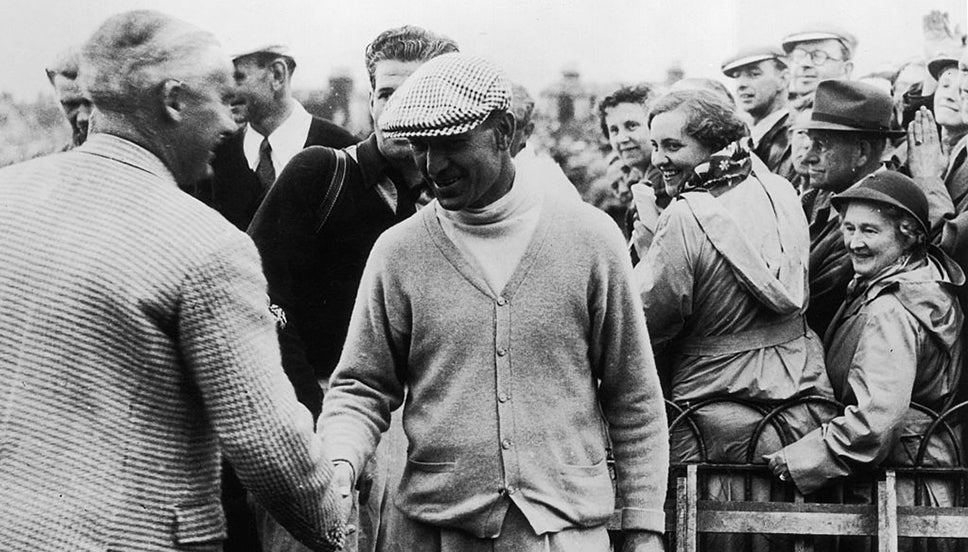The eight Major titles he collected before and after a horrific car accident in 1949, which almost killed Hogan and his wife Valerie, made sure of that.
But the way he crossed the pond to compete on British soil for the first time, and left with the Claret Jug in tow, was worthy of the highest praise and one of Hogan's finest accomplishments.
The all-conquering American had already claimed the Masters and U.S. Open titles in 1953, yet Carnoustie and The 82nd Open that July was a different challenge altogether.
A new lawnmower?
Hogan may have been arguably the greatest golfer in history at the time, and in the form of his life, but as he prepared to compete on unfamiliar fairways and under slightly different rules in his first ever Open Championship, the 40-year-old wasn't leaving anything to chance.
He arrived in the UK a week early to practise with the smaller, 1.62in golf ball, which he had not used before.
The centre-shafted putter that Hogan preferred was now legal under R&A rules but Carnoustie, with its rugged burnt-out fairways and slower greens, was a different beast to the perfectly-manicured venues in the USA and legend has it that Hogan offered to buy the greenkeeper a lawnmower upon first seeing the course.
The Texan still breezed through two rounds of qualifying - a gallery of over 2,300 turning up for the second day, forcing The R&A to introduce hand-held ropes for the first time - and even his fellow pros were enraptured by his mystique.
"He was a total mystery," Peter Alliss, who would go on to finish ninth, later recalled. "He was from another planet.
"We were all in awe of him. He was like royalty - people would approach him deferentially."
A devillish hole
The sixth hole at Carnoustie - a 565-yard par-five - can be a nightmare to navigate, requiring a combination of length and precision, often into a prevailing wind, that tests even the very best.
Back in 1953, none of the players considered attempting to drive the ball down the left-hand side, tight to the out of bounds, until 'The Wee Iceman' approached the hole - as Curt Sampson explains in his book 'Hogan'.
"Most of the fairway was to the right, but Hogan noticed that the hole opened up from the left side," writes Sampson.
"He could hit this green in two if he could thread a drive into a narrow haven of brown grass between the fence bordering the practice ground and a sod-faced bunker deep enough to hide a cow. He went for it and made it, in all four rounds."
There was no margin for error and Hogan certainly did not hold back, with the hole now known as Hogan's Alley due to his exploits in 1953.
He did it his way
On the second day, Frank Sinatra, who was performing at a concert in Dundee, was in the gallery and told the captivated media that "all America is rooting for Hogan."
An opening round of 73 was followed by a 71 to leave Hogan two behind the leaders at the halfway mark, but he shared top spot with Roberto De Vicenzo following a third-round 70.
Like all golfing greats, the American came into his own over the final 18 holes - his closing round of 68 was a new course record for Carnoustie, clinching victory by four shots from a quartet of players.
Unsurprisingly, the only question the people of Carnoustie wanted to know of the newly-crowned Champion Golfer of the Year was whether he would return.
"I don't know when I'll be back," admitted Hogan at the prize-giving. "But I'll try to make it next year."
The American never did come back to The Open, but his legacy was already cemented. And how he navigated one of the toughest holes in golf showed all those that followed the way to success.
